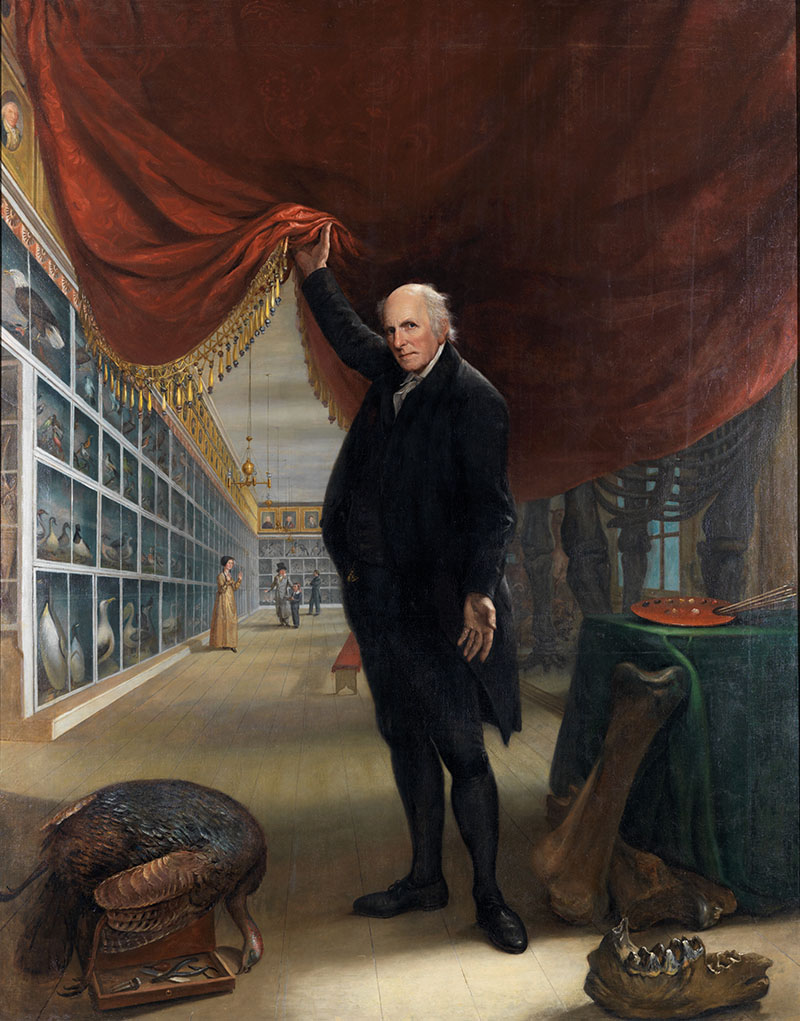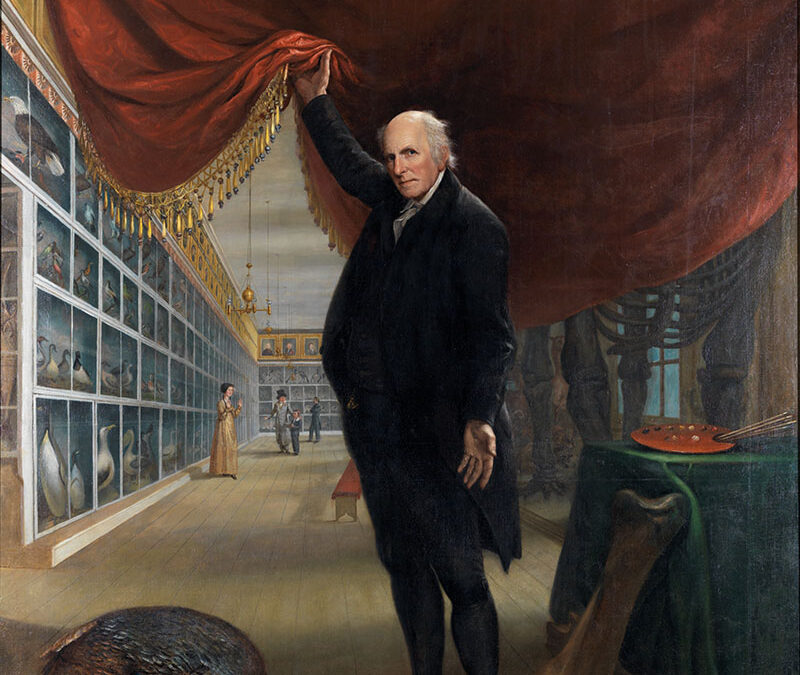The Artist in His Museum

| Maker | Charles Willson Peale |
| Date of Creation | 1822 |
| Location | Philadelphia, Pennsylvania |
| Materials | Oil on canvas |
| Institution | Pennsylvania Academy of the Fine Arts |
| Credit Line | Gift of Mrs. Sarah Harrison (The Joseph Harrison, Jr. Collection) |
| Accession Number | 1878.1.2 |
| Photo Credit | Courtesy of the Pennsylvania Academy of the Fine Arts |
Throughout his long life, Charles Willson Peale continually strove to improve the civic and artistic life both of his adopted city and the young republic. Besides founding two art academies—including the Pennsylvania Academy of the Fine Arts—and the nation’s first museum, he was the patriarch of an artistic dynasty that carried out his ideals. Peale thus disseminated culture both within the family sphere and in the wider world. Nowhere is this more apparent than in the remarkable self-portrait he executed at the age of 81. With more than a touch of the showman, Peale literally raises the curtain to reveal the wonders of his collection, then located in the long gallery of Independence Hall. Peale’s museum offered a cabinet of curiosities to instruct and entertain the spectators, from the wild turkey at the lower left, to the skeleton of the mastodon he had exhumed and brought to Philadelphia at the right. Cages in the background display natural history specimens, while above them portraits of American worthies celebrate the heroes of the new country. Significantly, the visitors are in family groups, echoing Peale’s commitment to education and the Linnaean classification system. Behind his welcoming outstretched hand, the artist’s palette takes prominent placement in the composition, reminding viewers that Peale is a master of the medium. The Artist and His Museum serves not only as a display of wonders, but an encapsulation of Peale’s storied life. Part advertisement, part philosophical statement, The Artist in His Museum stands as a triumphant artistic and historical accomplishment illustrating American Enlightenment.

